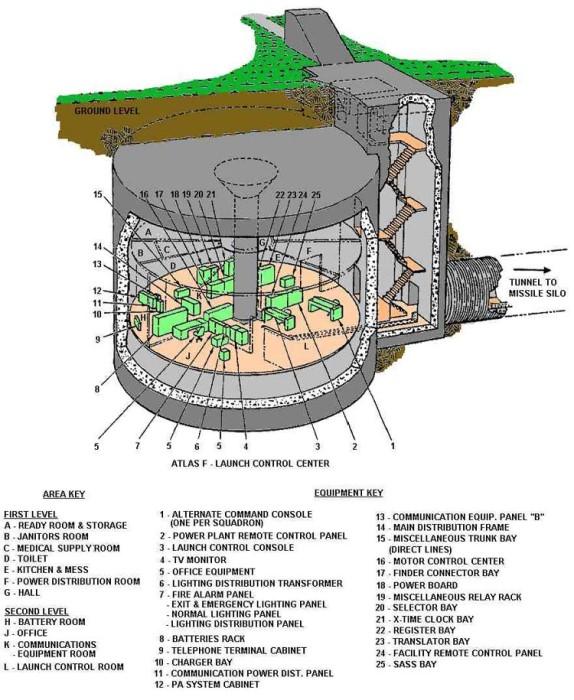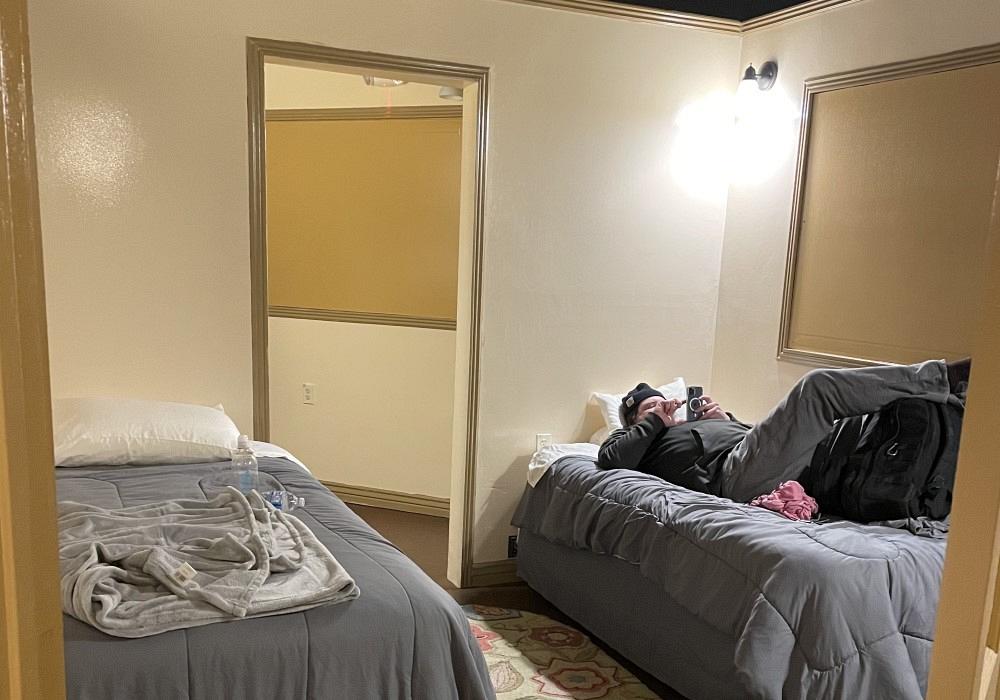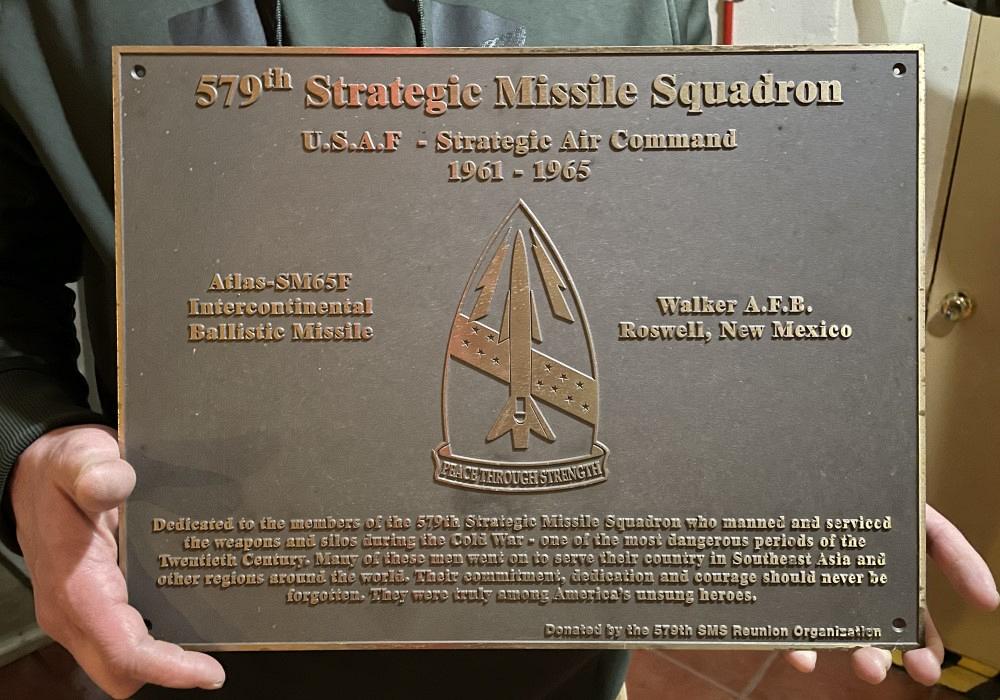- FMA
- The Fabricator
- FABTECH
- Canadian Metalworking
Categories
- Additive Manufacturing
- Aluminum Welding
- Arc Welding
- Assembly and Joining
- Automation and Robotics
- Bending and Forming
- Consumables
- Cutting and Weld Prep
- Electric Vehicles
- En Español
- Finishing
- Hydroforming
- Laser Cutting
- Laser Welding
- Machining
- Manufacturing Software
- Materials Handling
- Metals/Materials
- Oxyfuel Cutting
- Plasma Cutting
- Power Tools
- Punching and Other Holemaking
- Roll Forming
- Safety
- Sawing
- Shearing
- Shop Management
- Testing and Measuring
- Tube and Pipe Fabrication
- Tube and Pipe Production
- Waterjet Cutting
Industry Directory
Webcasts
Podcasts
FAB 40
Advertise
Subscribe
Account Login
Search
Staying overnight in a Cold War-era missile silo near Roswell, Part 1
The history behind U.S. Cold War-era missile silos and the ICBMs that housed in them
- By Darla Welton and Josh Welton
- June 4, 2021

While road tripping through New Mexico, Josh and Darla Welton stopped in Roswell to stay overnight in a Cold War era missile silo, operated by Gary Baker. In Part 1 of their two-part blog about the experience, they offer a bit of a history lesson. Images: Josh and Darla Welton
It’s a sunny afternoon in late February. Josh and I are driving through dairy farmlands just outside of Roswell, N.M. We miss the mile marker that we’ve been searching for and have to turn around. If you blink, you’ll miss it. And we missed it. We back-track about a mile and pull onto an unmarked road. Curving down a bumpy two-track, we finally arrive at a door standing in the desert, surrounded by a fence.
Our instructions say to enter through the large metal door and descend the stairs. And then more stairs. We eventually arrive at a large bomb shelter door and walk through.
On the platform, I yell out, “Hello!?” My voice echoes.
A cheerful voice replies, “Well, hello! Come on in!”
It’s Gary Baker, the owner and host of our overnight stay in this unbelievable Cold War-era Atlas F missile silo bunker, which was part of the Walker Air Force Base's 579th Strategic Missile Squadron (SMS).
The incomparable Baker is one of the foremost authorities in the U.S. on these Cold War -era missile silos. His passion and knowledge are unsurpassed. While searching places of interest in Roswell, I came across him on YouTube: “The Silo Man.” And the day before traveling to Roswell, I learned that he had just opened the bunker for overnight guests.
That evening and the following morning, we spend hours talking with and learning from Gary. We have deemed him a freaking national treasure.
Sitting down at a table in the bunker, surrounded by history books and missile photos, Josh and I quickly learn about Gary’s family, his love of country, his zeal for life and adventure, and, of course, his unmatched knowledge about missile silos.
Wanting to give some background on how the missile silo came into existence, he takes us on a deep dive into the history of the U.S. missile program.
Almost immediately, we connect over “Operation Paperclip,” a book that we had both read by journalist and Pulitzer Prize finalist Annie Jacobsen. The book highlights America’s decades-long and highly controversial secret intelligence program that brought Nazi scientists and their families to the U.S. after World War II. Many of these Nazi scientists stood accused of war crimes, others faced trial at Nuremberg, and one was convicted of mass murder and slavery.
However, these criminals became directly responsible for significant advances in U.S. medical sciences, rocketry, and our space program. The American government desperately wanted to pull ahead of the Russians in the Cold War and beat them in the race to outer space. Wernher von Braun, the Nazi scientist who became “the father of NASA,” spent his first four years in America at Fort Bliss and White Sands Proving Grounds, which also is located in New Mexico. Eventually, he joined up with the other 127 covert Nazi scientists at Marshall Space Flight Center in Huntsville, Ala.
“Many people don’t understand that the only reason we got to space was because of a weapon,” Baker tells us.
The three of us all share our moral outrage, but we understand the importance of acknowledging our country’s history and learning from it. Baker also reveals that his wife’s father was, at one point, Von Braun’s chemical engineer at the Redstone Arsenal in Huntsville, Ala.
“The Redstone was built in Detroit!” exclaims Josh.
“Oh absolutely,” says Gary. “The reason being that Eisenhower’s best friend was on the board of directors for Chrysler.”
He goes on to explain: “So here we are in the big, bad push to beat the Soviets, who had already launched their first ICBM [intercontinental ballistic missile] in August 1957. We think we are getting close to putting the first satellite into orbit. However, they beat us with Sputnik. And if they could put a radio satellite into space, then they could certainly put a weapon there. And that was our greatest fear. So in December 1957, America finally launches our first ICBM, the Atlas. By January of 1958, a Redstone missile carries the first U.S. satellite into orbit.
“In 1960, 72 heavily fortified, underground Atlas F missile silos were built around the U.S. in a rush to match Soviet weapons systems. Twelve of these sites were built around Walker Air Force Base in Roswell. The interesting part about it? The U.S. didn’t even have the Atlas F missile when these silos began construction in June 1960. We had an Atlas D, but not an Atlas F. The Atlas F was still being designed to launch from within an underground silo.
“Construction on this exact site began in June 1960 when I was two days old. It is specifically mentioned in President Kennedy’s top-secret report on the Cuban missile crisis from October of 1962 when this site was activated.
“Of the 12 sites that we had in Roswell between 1962, when they became operational, to 1965, when they were deactivated, we had three of them blow up due to mechanical failure and design flaws. The two silo doors are 150,000 pounds each. When the first missile blew in June of 1963, those doors blew 100 feet in each direction! This is a weapons system ...”
Josh finishes Gary’s sentence: “... that we would want our enemies to have!” We all can’t help but laugh.
Baker continues: “But the launch crew lived. They were inside of one of these launch-control bunkers that we are sitting in now. The crew’s survival is a testament, in my opinion, to the overengineering of the bunker itself.”
He laughs again. “I really love getting on my soapbox about all of this.”
Josh and I exclaim that we are here for it.
“I love the enthusiasm,” Gary says. “I feed off it. So many people just flat-out don’t understand or aren’t that interested. And ok, some of it is not that interesting. And honestly, I was not a missile person, but I love the engineering, the fabrication. I love the facilities.”
Our conversation continued well past midnight and our eyes begin to feel heavy. Gary politely excuses himself and says he plans to return in the morning.
As for us, we brush our teeth and settle into our bunker accommodations for the night. Deep underground, I lie in bed wondering how to sleep peacefully in a place that once housed some of the deadliest weapons in human history - ICBMs armed with nuclear warheads capable of laying waste to large cities. A truly wild thought and experience, but we manage to catch some z’s.
Editor's Note: Stay tuned for Part 2, which will include specs on the silo; how much these sites cost to build; why they are now defunct; and Gary’s adolescent, adrenaline-seeking adventures to these structures around Roswell.
subscribe now

The Fabricator is North America's leading magazine for the metal forming and fabricating industry. The magazine delivers the news, technical articles, and case histories that enable fabricators to do their jobs more efficiently. The Fabricator has served the industry since 1970.
start your free subscriptionAbout the Authors

Josh Welton
Owner, Brown Dog Welding
(586) 258-8255
- Stay connected from anywhere

Easily access valuable industry resources now with full access to the digital edition of The Fabricator.

Easily access valuable industry resources now with full access to the digital edition of The Welder.

Easily access valuable industry resources now with full access to the digital edition of The Tube and Pipe Journal.
- Podcasting
- Podcast:
- The Fabricator Podcast
- Published:
- 04/16/2024
- Running Time:
- 63:29
In this episode of The Fabricator Podcast, Caleb Chamberlain, co-founder and CEO of OSH Cut, discusses his company’s...
- Industry Events
16th Annual Safety Conference
- April 30 - May 1, 2024
- Elgin,
Pipe and Tube Conference
- May 21 - 22, 2024
- Omaha, NE
World-Class Roll Forming Workshop
- June 5 - 6, 2024
- Louisville, KY
Advanced Laser Application Workshop
- June 25 - 27, 2024
- Novi, MI



































